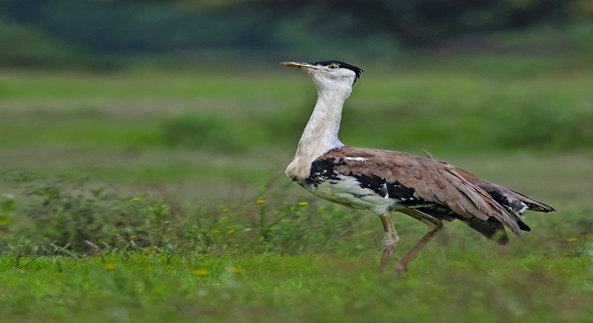Great Indian Bustards
Context
The recent sighting of three Great Indian Bustards (GIBs) deep in Pakistan’s Cholistan desert has given rise to speculation that the endangered birds might have flown across the international border from India.
About Great Indian Bustards
- The Great Indian bustard (Ardeotis nigriceps) is a large terrestrial bird with a horizontal body and long bare legs, giving it an ostrich-like appearance; this bird is among the heaviest of the flying birds.
- GIBs are the largest among the four bustard species found in India, the other three being
- MacQueen’s bustard
- lesser florican
- Bengal florican
- The state bird of Rajasthan is considered the flagship bird species of grassland.
Protection status
- Birdlife International: uplisted from Endangered to Critically Endangered (2011)
- Protection under CITES: Appendix I
- IUCN status: Critically Endangered
- Protection under Wildlife (Protection) Act: Schedule I
Threats
- Overhead power transmission: This has resulted in the electrocution of the bustards.
- Poor vision: Due to their poor frontal vision, they can't detect power lines in time and their weight makes in-flight quick maneuvers difficult.
- Windmills: Coincidentally, Kutch and Thar desert are the places that have witnessed the creation of huge renewable energy infrastructure.
- Noise pollution: Noise affects the mating and courtship practices of the GIB.
- Changes in the landscape: by way of farmers cultivating their land, which otherwise used to remain fallow due to frequent droughts in Kutch.
- Cultivation changes: Cultivation of cotton and wheat instead of pulses and fodder are also cited as reasons for falling GIB numbers.

